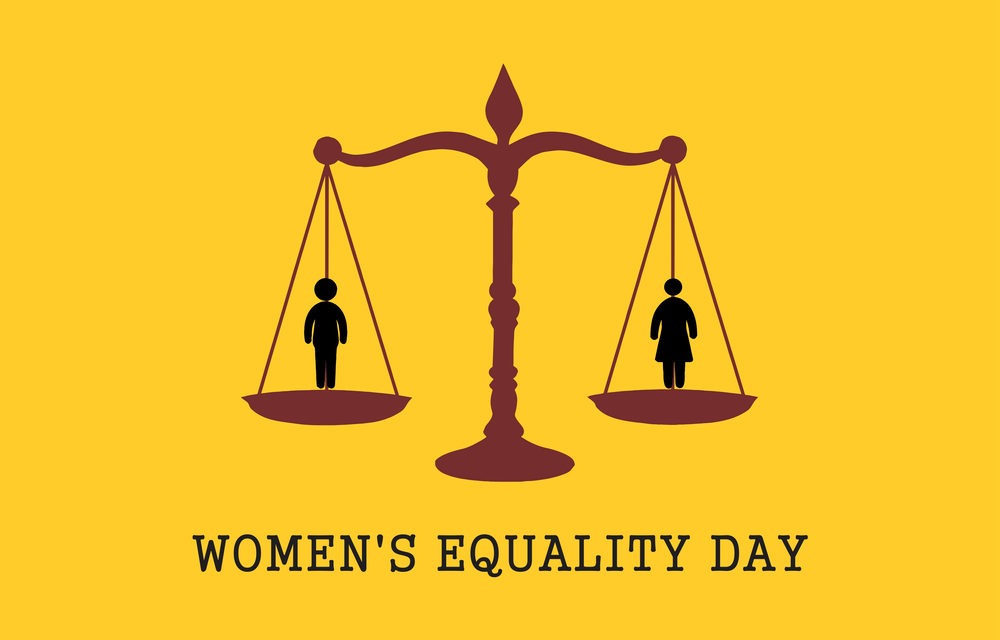U.S. ranking as only the 30th best country for gender equality
Women’s Equality Day, celebrated every Aug. 26, commemorates the passage of women’s suffrage in the U.S. and reminds us of the hurdles overcome by the heroic women who faced violence and discrimination to propel the women’s movement forward.
With Women’s Equality Day around the corner and the U.S. ranking as only the 30th best country for gender equality, the personal-finance website WalletHub today released its report on 2021’s Best & Worst States for Women’s Equality.
In 2021, the U.S. failed to place in the top 10 — or even the top 25 — of the World Economic Forum’s ranking of 156 countries based on gender equality. The U.S. ranked 30th, which is better than last year’s rank of 53rd.
In order to determine where women receive the most equal treatment in American society, WalletHub compared the 50 states across 17 key metrics. The data set ranges from the gap between female and male executives to the disparity in unemployment rates for women and men.
Women’s Equality in California (1=Best; 25=Avg.):
- 2nd – Earnings Gap
- 8th – Work Hours Gap
- 12th – Minimum-Wage Workers Gap
- 15th – Entrepreneurship Rate Gap
- 8th – Political Representation Gap
Expert Commentary
Q: The U.S. is currently ranked 87th globally when it comes to the gender gap in health and survival. What is driving this? What should be done to close this gap?
A: “There are persistent widespread attitudes of subtle and overt sexism and misogyny, which intersect powerfully with racism and classism, which fuel a lack of protections for and enable the continual exploitation of women in the United States. For example, the U.S. is the only industrialized nation that has not ratified the treaty of the Convention on the Elimination of All Forms of Discrimination Against Women (CEDAW), often referred to as the International Women’s Bill of Rights. Without specific legislation and protections, U.S. women experience poor social and health outcomes, such as enduring high rates of harassment, violence, morbidity, and maternal mortality.”
— Debra Mollen, Ph.D. – Professor, Texas Woman’s University
“There are a lot of factors in play that contribute to this reality, including the vast disparities that exist worldwide in terms of access to quality, affordable health care. American women living abroad have highlighted the stark differences in cost, compassion, and duration of health care services that they needed while they were living in other countries, which demonstrates how difficult it is to access health services in the United States in comparison to other places in the world. In the U.S., not everyone has access to insurance that will cover the high costs of medical care. And not all people – even with insurance – have access to the same menu of services for their care. Free or affordable insurance and equitable access to healthcare need to be a top priority in order to close this gap.”
— Laura Mattoon D’Amore, Ph.D. – Associate Professor, Roger Williams University
Q: The U.S. is currently ranked 37th globally when it comes to the gender gap in political empowerment. Are there strategies the US can learn from other countries to help close this gap?
A: “Political science research indicates that one of the most promising ways to increase female representation is recruitment. When women run for office, they win at the same rates as men. Yet women are less likely than men to possess political ambition or to say they are qualified to run for office and less likely to be interested in running for office than men with identical qualifications. However, political parties can overcome these attitudes by more actively recruiting women and supporting their campaign infrastructure. This means providing them information and training, contributing to their campaign coffers, and explicitly providing them with party endorsements.”
— Leslie Caughell – Associate Professor, Virginia Wesleyan University
“Strategies that have helped close the gender gap in work and economics can be used to address gender inequality in political empowerment. The U.S. should consider and implement the strategies that have been proven effective in other countries. These primarily involve developing a culture that expects men to be responsible and highly involved in child-rearing and establishing policies and practices to make this possible. Longer and paid parental leave (regardless of gender), public spending on childcare, and quality, affordable healthcare for families creates an environment within which men can share the physical, social, and emotional work of parenting. This provides a greater chance that neither partner is completely drained and unable to think about politics. Additionally, both genders are absent from the political arena for equal amounts of time ideally preventing the creation of a gap in political empowerment.”
— Elisha Marr, Ph.D. – Associate Professor, Calvin University
Q: What policies would prove effective at increasing female representation in senior management roles in the Fortune 500 and other large, multinational corporations?
A: “Increasing female representation in senior management roles in Fortune 500 and other multi-national corporations requires company policies that encourage more community-oriented manners of leadership, changing how we perceive successful leaders, and combating implicit biases about women in professional contexts. Many of the skills that we traditionally think of as ‘feminine’ and ‘soft skills’ play a role in improving the performances of executives in leadership positions. However, we are still more likely to associate leadership with masculine attributes like assertiveness and to penalize women that demonstrate those attributes as less agreeable or professional.”
—Leslie Caughell – Associate Professor, Virginia Wesleyan University
“Paid family leave, free or affordable childcare, and flexible, family-friendly workplace policies are absolutely essential to closing gaps for women in senior management roles. These kinds of policies have not only been found to improve employee satisfaction in the workplace but they have been proven to increase the number of women in senior management roles.”
— Laura Mattoon D’Amore, Ph.D. – Associate Professor, Roger Williams University
More from WalletHub
Best & Worst States for Women
Best & Worst Places to Start a Career
Best & Worst States for Working Moms
Best & Worst Cities for Single Moms
Image Sources
- Women’s Equality Day: Shutterstock







